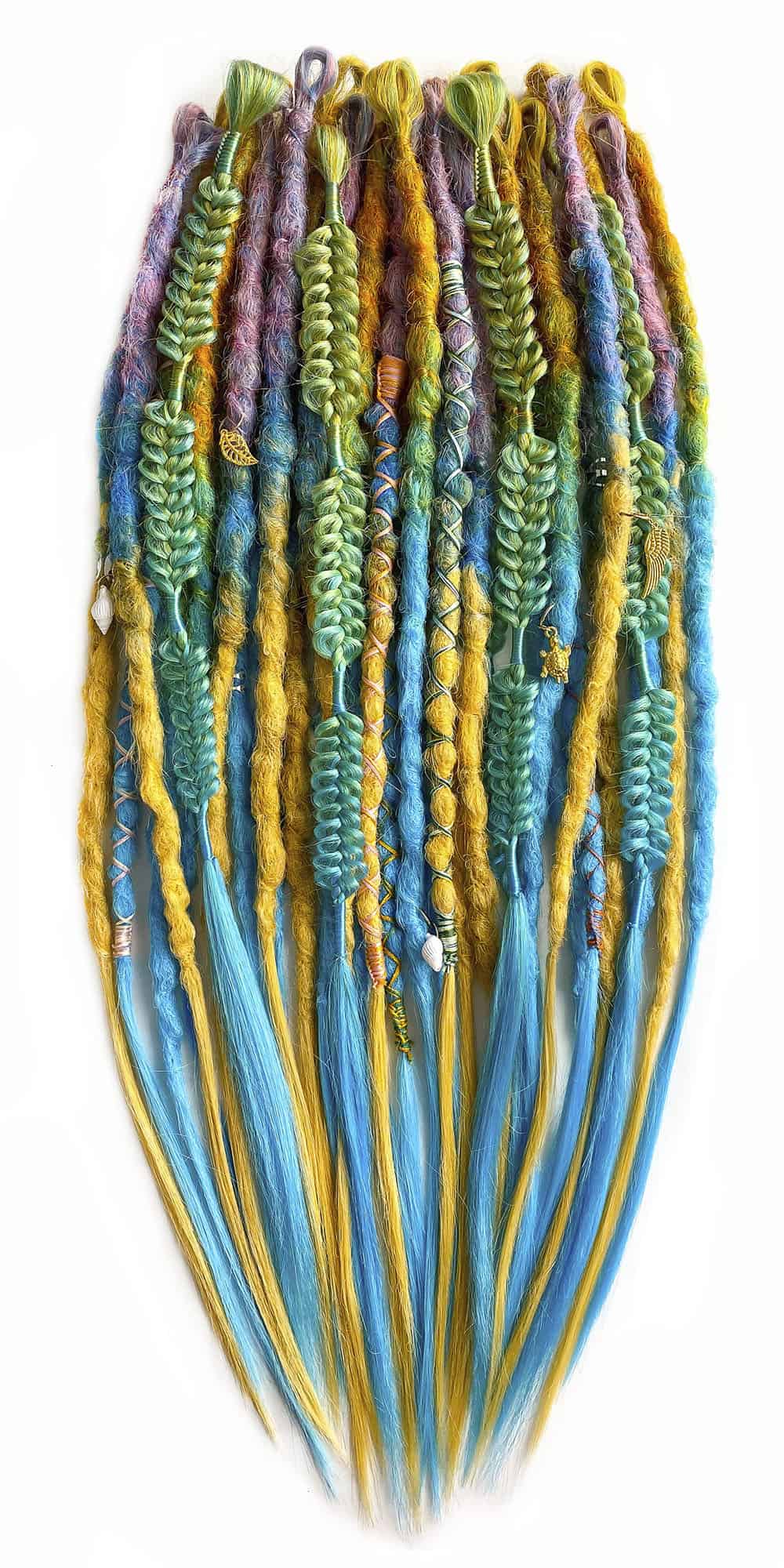It depends on whether the set of dreads you choose is in stock. If it is, standard shipping time is 2-4 days. If the set is not available, it may take 1-2 weeks after payment to manufacture it.
Sure you can! We can make any set of dreads you can imagine, as well as help you with selection. Contact us to consult or order a customized set!
We can refund only if the product has not been used. If you want to refund, send us an email or message us via WhatsApp or Telegram.
All types of dreadlocks are made with the minimal hair length of 7-10 cm.
Temporary synthetic dreadlocks are used to make a non-permanent type of hairstyle. They are made of Kanekalon (synthetic hair) and braided in with your natural hair without damaging it. Quick to attach and quick to remove, a most handy type of hairstyle.
It is a hairstyle which is made out of your own hair with a comb and hook, forming so-called “locks “. Such dreadlocks take longer to make than temporary dreadlocks, which is worth considering when choosing the type of dreadlocks. For more information, please, consider reading our posts.
These are the types of “temporary” synthetic dreadlocks, DE – 1 base “arc” with double ends, SE – 1 base “loop” with a single end.
By all means it is possible. Modern methods of making natural dreadlocks allow you to comb them out, doing it as gently as possible, and preserving your hair in good condition after combing.
Taking care of natural dreadlocks is quite simple, but you still need to follow certain rules. Rolling the roots once a week is an important step in the maintenance of your dreadlocks. Consider visiting your stylist once every 3 months if you want even, high-quality and healthy dreadlocks.
It is absolutely essential, just a little less often than normal hair. “Temporary” synthetic dreadlocks are to be washed once a week, natural dreadlocks once every 2-3 weeks depending on your preferences. The more often you wash your dreadlocks, the frizzier they will become, this should be taken into account when deciding how often to wash them.
On average – 1,5-2 months.




